#symbolizing a deeper connection with Tristan
Explore tagged Tumblr posts
Text
Small essay about my Tristan Alter, the meaning of Tantris and the connection of these two things
Before reading; if you are interested in my Tristan Alter, I will make a whole Thread soon, but so far you can take a look here for the basic concept as Ascension 1 is finished, as well as what the thought behind Tristan Alter and his Master is:
But now to the actual topic:
I consider giving Tristan Alter the main name „Tantris“ and Tristan Alter is just the sub title. The reason for this is deeper in meaning so here me out. As we know in the Story Tristan re-branded himself as Tantris to not get recognised by the Irish royal family. However you may have noticed that the syllables of Tristan are just exchanged for Tristan. It sounds silly at first but it can hold a deeper meaning. Tristan is named after the sad circumstances of his birth and it’s also a foreshadowing of his further story when Tristan played first at Markes court people told him that Tristan doesn’t match him at all as Name since it’s way too sad. When Tristan later calls himself Tantris the Minstrel, he not only reversed the name, changing the meaning of the sadness to something good but also said with that „I decide my own Fate“. This paired with him disguising himself as minstrel also gives away that he would way rather be just a musician instead of a knight. Tantris is the symbolic of Tristan finally deciding for himself what he really wants but also, Tantris as name can mean different things. In the English Form the word comes from the Latin word „iustus“ which means „Justified“ or „well founded“. Meanwhile Tantris is also a name existing in the Buddhism meaning „search for completeness“ This said the name change of Tristan to Tantris is not only an Alter Ego he made but holds a way deeper meaning to it as it gives a lot away of what he as a person wants.
Also if we keep it in the TrisQuia Context: Tantris was the one who said he has a wife at home. A Lie he made up so he can leave Isoldes court earlier. An imaginary made up wife he loves so much if she would end up with someone he couldn’t bear it. In my Headcanon this is the role of Juquia being in Tristans Head. Tristan Alter as Tantris would also have this Juquia As his wife who he loves so much if she wasn’t anymore he couldn’t bear it, which is basically the origin of his being. So he even would have a reason to name himself that inside of my Yumeshipping, haha.
Read more here:
Pseudo-Lostbelt Juquia herself is a Lie too, because she shouldn’t exist like this and only can do so because of Tristans inner wish (and Crocell lol) - Her look even is a recreation on how Tristan remembered her. So she is his „Fantasy“ basically.
TL;DR: Tristan Alter naming himself Tantris is a hint to how he changed his Fate to not being poisoned and being able to have a happy life. Someone who decides over his own Fate and reversed his meaning, becoming even an own person at this point + He lives for Juquia <3
#fate grand order#fgo#fate go#tristan#fate go tristan#fate grand order tristan#fgo tristan#tristan fate go#tristan fate grand order#tristan fgo#tristan alter#fate go yumeship#fate grand order yumeship#yumeshipping#Gottfried von Straßburg#Gottfried von Straßburg Tristan#fatego fanservant#fate grand order fanservant#fate oc#fate go oc#fate grand order oc#fate grand order fan servant#fgo fan servant#fgo fanservant#fgo master oc#fgo oc x canon#fgo oc#fate go oc x canon#TrisQuia#TrisQuia Alter
7 notes
·
View notes
Text
callista evadne larkspur

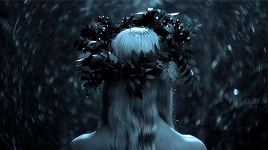
[ ANYA TAYLOR-JOY, 28, CIS WOMAN, SHE/HER ] Welcome to Antioch, CALLISTA EVADNE LARKSPUR ! Local sources report that you’ve been in town for 2 YEARS and are known to be AUTHENTIC yet ALOOF. Others have dredged up rumors that you’re involved in SATANIC PANIC as a DRUMMER, but most know you for your work as a BARTENDER at SWEET RELEASE. We’ll see you around town soon !
Character Name: Leela Ananya Rajan Nickname (s): Cally/Cali Face Claim: Anya Taylor Joy Birthday: November 7th Place of birth: Eidenburgh, Scotland Sexuality: Pansexual Zodiac: Scorpio MBTI: INTJ Moral Alignment: Neutral good Occupation: Bartender Place of work: Sweet Release Subplot affiliation: Satanic Panic as the Drummer 3 positive traits: determined, compassionate, authentic 3 negative traits: aloof, perfectionist, stubborn Languages: English & French Love language: Acts of service, words of affirmation, & quality time Biography (optional):
Callista was born in Eidenburgh, Scotland, growing up with a family that valued creativity & individuality, with a free-spirited artist mother & a practical, hardworking father. Her parents encouraged both Callista & her younger brother, Tristan, to explore their artistic passions. The Larkspur household was a blend of chaotic creativity & strcutured discipline. Callista's mother, Amelia, filled their gome with vibrant colours & unique decorations, while her father ensured a stable environment. Despite their differences, Callista's parents were supportive of her & her younger brother's pursuits.
Growing up, Callista was a bit of an enigma to her peers. She was naturally drawn to the darker, more mystical aspects of life, which made her both intriguing & somewhat intimidating. Despite this, she had a close-knit group of friends who shared her interests in the occult, witchcraft, & mythology. Callista often spent her free time reading about ancient legends, practicing tarot, & exploring the mystical history Edinburgh. Her fascination with the occult began at a young age when she discovered her grandmother's collection of witchcraft & mythology books. She was captivated by the stories of powerful women, magical creatures, & ancient rituals. This interest only grew stronger as she got older, leading her to delve deeper into the world of mystical & the arcane.
Her passion for drumming sparked when she was 14, after attending a local rock concert with her mother. The energy & power of the drummer's performance left a lasting impression on her. She begged her parents for a drum set, & once she had one, she dedicated herself to mastering the instrument. Drumming became her outlet, a way to express herself & channel her emotions.
Seeking a fresh start and new opportunities, Callista moved to Antioch, Oregon, two years ago. The move was a significant change, but she was eager to immerse herself in a new environment & explore the local music scene. It wasn't long after that she joined Satanic Panic & became an integral part of the band, contributing to their intense performances & secret, yet controversial, rituals.
Life has taken an unexpected turn, where she has discovered she is two months pregnant. She's been hiding her pregnancy from everyone, except her younger brother, as she grapples with growing uncertainty about her involvement in the band's rituals & the impact it might have on her unborn child.
Headcanons
Mystical Rituals:
Callista has a nightly ritual where she lights candles and meditates with her tarot cards, seeking guidance and clarity for her life decisions. She keeps a small altar in her bedroom adorned with crystals, herbs, and symbolic trinkets that she feels connected to.
Tattoo Meanings:
Each of Callista’s tattoos holds deep personal meaning, often tied to her experiences and beliefs. One of her tattoos is a phoenix, symbolizing rebirth and resilience, reflecting her journey of starting anew in Antioch. She has a small, discreet tattoo of a crescent moon on her wrist, representing her fascination with the mystical and the unknown.
Music as Therapy:
Drumming is not just a passion but also a therapeutic outlet for Callista. Whenever she feels overwhelmed, she retreats to her drum kit to lose herself in the rhythm. She has a secret playlist of calming, acoustic songs that she listens to when she needs to relax and find peace.
Connection with Nature:
Callista feels a profound connection to nature and often takes long walks in the forests around Antioch with her Bordie Collie, Shadow. These walks help her clear her mind and feel grounded. She collects natural items like stones, feathers, and leaves during her hikes, incorporating them into her mystical practices.
Protective Instincts:
Callista has a fierce protective instinct, especially towards her younger brother Tristan and her unborn child. She often finds herself thinking about how to create a safe and loving environment for her baby. Despite her tough exterior, she is deeply empathetic and often takes on the role of a caretaker for her close friends and family.
Hidden Soft Side:
Callista has a hidden soft side that only a few people get to see. She loves baking, especially late at night, finding the process soothing and the results rewarding. She keeps a journal where she writes poetry and short stories, often inspired by her dreams and the myths she reads about.
Occult Knowledge:
Callista is well-versed in various occult traditions and practices. She can often be found reading ancient texts or researching new spells and rituals. She enjoys teaching others about the occult and mythological stories, finding joy in sharing her knowledge and seeing others become fascinated by it.
Musical Background:
Favorite Bands: Callista's favorite bands include Black Sabbath, Led Zeppelin, and The Cure. She draws inspiration from their dark and mystical themes. Songwriting: She occasionally writes her own music and lyrics, exploring themes of mysticism, inner turmoil, and resilience.
Occult Practices:
Tarot Reading: Callista is skilled in reading tarot cards and often consults them for guidance, especially during difficult times. Herbalism: She has a small garden where she grows various herbs used in her rituals and for medicinal purposes. Moon Rituals: She performs rituals during full moons, believing in their power to amplify intentions and bring about transformation.
Aesthetic Preferences:
Fashion Style: Callista’s wardrobe is predominantly black with occasional pops of deep red or purple. She loves leather jackets, lace, and vintage band tees. Home Decor: Her home is adorned with mystical and gothic decor, including crystals, candles, and antique furniture. She has a dedicated altar space where she practices her rituals.
Hobbies and Interests:
Reading: She has an extensive collection of books on mythology, witchcraft, and ancient history. Reading is one of her favorite ways to unwind. Sketching: Callista enjoys sketching in her free time, often drawing inspiration from her dreams and the natural world around her.
Relationship with Tristan:
Sibling Bond: Callista and Tristan have a unique way of communicating, often understanding each other without words. They share a love for music and often collaborate on creative projects. Support System: Tristan is one of the few people who knows about her pregnancy. He provides emotional support and helps her navigate her conflicting feelings about the band.
Connection with Shadow:
Training: Callista has trained Shadow to respond to various commands and tricks. Their bond is strong, and Shadow often senses her moods and provides comfort. Outdoor Activities: She enjoys taking Shadow on long hikes, finding solace in nature and the companionship of her loyal dog.
Future Aspirations
Balancing Life: Callista dreams of finding a balance between her music career and her new role as a mother. She hopes to continue making music while creating a stable and nurturing environment for her child. Legacy: She wants to leave a lasting impact on the music scene, not just through her performances but also by inspiring others to embrace their true selves and pursue their passions.
Wanted Connection #1: FAMILIAL ⸻ CALLISA EVADNE LARKSPUR is looking for the FATHER OF HER UNBORN CHILD. According to rumors, they look oddly similar to POC FC/UTP and are around 27-32. the mun DOES require you to contact them at @chroniichorror NAME HERE
Wanted Connection #2: regulars at sweet release
Wanted Connection #3: roommates ( 0 / 1-2 ) -- you wont' know about the pregnancy, but eventually you'll pick up on changes in behavior. extras to be discussed!
3 notes
·
View notes
Text
Andrew Tate beard

The Distinctive Beard of Andrew Tate: A Symbol of Style and Persona
Introduction Andrew Tate, renowned for his multifaceted career as a kickboxing champion, entrepreneur, and social media influencer, is also recognized for his distinctive beard. This article delves into the significance of Andrew Tate's beard, exploring its style, grooming routines, and the impact it has on his overall persona. By examining this aspect of his appearance, we gain a deeper understanding of how it complements his identity and public image. Aspect Details Full Name Emory Andrew Tate III Date of Birth December 1, 1986 Nationality American-British Father Emory Tate, an African American chess international master Mother British-Irish descent Ethnicity Mixed - African American and European (British and Irish) Occupation Kickboxing Champion, Entrepreneur, Social Media Personality Kickboxing Titles Four-time World Kickboxing Champion Entrepreneurial Ventures Involvement in various businesses including online marketing, real estate, and self-improvement platforms Social Media Presence Active on platforms such as Twitter, Instagram, and YouTube, known for his controversial and outspoken opinions Siblings Tristan Tate, also involved in kickboxing and business ventures Cultural Influence The fusion of African American resilience and European traditions has shaped his career and public persona Notable Achievements Successful transition from sports to business, building a personal brand online, and influencing a diverse audience Controversies Known for making bold and polarizing statements on social and political issues, leading to debates and criticism Public Perception Viewed as a complex and dynamic figure, with both admirers and detractors Personal Values Emphasizes discipline, resilience, and strategic thinking derived from his diverse cultural heritage Impact on Audience Engages with a wide range of individuals, leveraging his multicultural background to connect and resonate with people from various walks of life Challenges Navigating stereotypes and prejudices, balancing his outspoken nature with public expectations Legacy Continues to influence and inspire through his achievements in sports, business, and social media, highlighting the significance of his unique ethnic and cultural mix
The Evolution of Andrew Tate's Beard
A Journey Through Styles Andrew Tate's beard has undergone several transformations over the years. From a clean-shaven look in his early career to the well-groomed beard he sports today, his facial hair has evolved alongside his personal and professional growth. Each style has reflected different phases of his life, mirroring his changing roles and the image he seeks to project. Current Beard Style The current style of Andrew Tate's beard is characterized by its full and well-maintained appearance. It strikes a balance between rugged masculinity and refined elegance, making it a key feature of his visual identity. This style complements his bold and confident personality, enhancing his presence both in the ring and online.
The Significance of Andrew Tate's Beard
A Symbol of Masculinity In many cultures, a beard is a symbol of masculinity and strength. Andrew Tate's beard underscores these attributes, reinforcing his image as a powerful and assertive individual. It serves as a visual representation of his resilience and determination, qualities that have driven his success in various fields. Brand Identity For public figures like Andrew Tate, personal appearance is an integral part of brand identity. His beard is not just a style choice but a strategic element of his brand. It sets him apart from others, making him easily recognizable and memorable. The consistency in his appearance helps maintain a strong and cohesive brand image. Personal Expression Andrew Tate's beard is also a form of personal expression. It reflects his individuality and his willingness to stand out from the crowd. By choosing a distinctive beard style, he communicates confidence and a sense of self-assuredness that resonates with his followers and admirers.
Grooming Routine for Andrew Tate's Beard
Daily Maintenance Maintaining a beard like Andrew Tate's requires a dedicated grooming routine. Daily maintenance is crucial to keep the beard looking sharp and well-groomed. This involves regular washing to remove dirt and oils, followed by conditioning to keep the hair soft and manageable. Trimming and Shaping Regular trimming is essential to maintain the desired shape and length of the beard. Andrew Tate likely uses high-quality grooming tools to achieve precise lines and an even trim. Shaping the beard to suit his facial structure enhances his features and adds to the overall aesthetic appeal. Beard Oil and Balms Using beard oil and balms is a key part of Andrew Tate's grooming routine. These products help nourish the beard hair, prevent dryness, and add a healthy shine. The use of natural ingredients ensures that the beard remains soft and the skin underneath is well-hydrated. Professional Grooming Services Andrew Tate may also rely on professional grooming services to achieve a perfectly groomed beard. Regular visits to a barber ensure that his beard is maintained to the highest standards. Professional barbers can provide expert advice on the best styles and grooming techniques.
The Impact of Andrew Tate's Beard on His Persona
Confidence and Authority A well-groomed beard like Andrew Tate's exudes confidence and authority. It enhances his commanding presence, whether he is in the ring, on social media, or in business meetings. The beard adds to his persona, making him appear more assertive and self-assured. Relatability and Influence Andrew Tate's beard also makes him relatable to his audience. Many of his followers admire his style and seek to emulate his grooming habits. By sharing his grooming routine and tips, he builds a connection with his audience, further solidifying his influence and reach. Aesthetic Appeal The aesthetic appeal of Andrew Tate's beard cannot be overlooked. It complements his facial features and enhances his overall look. The beard adds a layer of sophistication to his appearance, making him stand out in both professional and social settings.
Conclusion
Andrew Tate's beard is more than just a style choice; it is a significant aspect of his identity and public persona. From symbolizing masculinity and strength to enhancing his brand image and personal expression, the beard plays a crucial role in defining who he is. By maintaining a meticulous grooming routine, Andrew Tate ensures that his beard remains a standout feature, contributing to his confident and authoritative presence. Read the full article
0 notes
Text
Ok sosososo
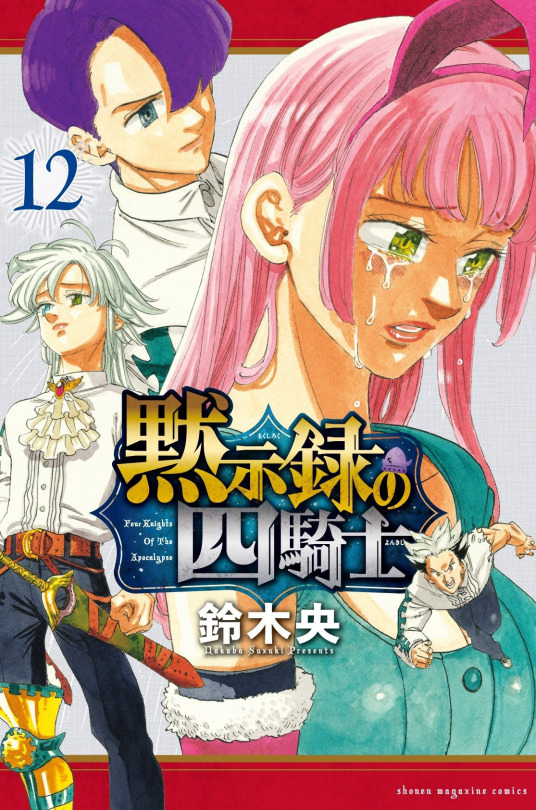
Jade has white hair
Isolde has green eyes
Chion has blue eyes
Tristan has white hair, blue and green eyes
They are part of Tristan 🥺🥺🤍🖤
#they are all physical characteristics#and unless Jade dyed his hair#they are things one is born with#symbolizing a deeper connection with Tristan#idk#I think is cute to think they are like meant to be friends#and in a way#tristan always carries a part of them#4kota#four knights of the apocalypse#mokushiroku no yon kishi#manga#mnyk#seven deadly sins sequel#tristan Liones#Jade#tristan#Isolde#chion#tristan platoon#friends 🥺✨#4kota manga#manga color page
59 notes
·
View notes
Photo

For the week of 28 October 2019
Quick Bits:
Afterlift #1 is a digital original from Chip Zdarsky, Jason Loo, Paris Alleyne, and Aditya Bidikar. Very interesting concept here playing with a character who drives for a Lyft analogue in Cabit, leading to becoming a rather unique courier.
| Published by Jams & Jellies

Batman Annual #4 actually gives us many adventures and stories as we go through almost two months’ of diary entries of Batman’s exploits from Alfred, as told by Tom King, Jorge Fornés, Mike Norton, Dave Stewart, and Clayton Cowles. It’s a nice way to pack a lot of story into this annual in a fairly unique way, while also showcasing just how busy Batman really is.
| Published by DC Comics

Black Panther #17 sets up for the next confrontation with N’Jadaka and his forces, also giving us a rather...awkward but interesting conversation between Storm and Nakia. Gorgeous art from Daniel Acuña.
| Published by Marvel

Bloodshot #2 continues the balls to the wall action as Bloodshot and the Black Bar conflict escalates, from Tim Seeley, Brett Booth, Adelso Corona, Andrew Dalhouse, and Dave Sharpe. It’s a bit of a throwback to a more action-oriented style, but it definitely works for Bloodshot. A nice change of pace to give a variety of storytelling.
| Published by Valiant
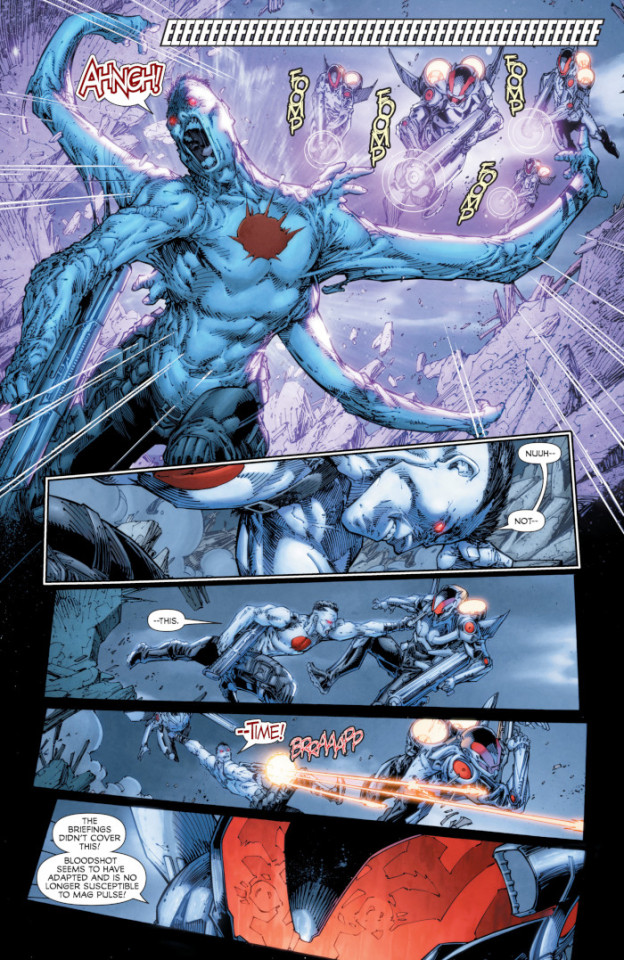
Conan the Barbarian #10 spins us the twins’ yarn as they plotted their revenge on Conan, from Jason Aaron, Mahmud Asrar, Matthew Wilson, and Travis Lanham. The art from Asrar and Wilson is gorgeous. The backstory building up to last parts of this story and the fate of Conan is gripping.
| Published by Marvel
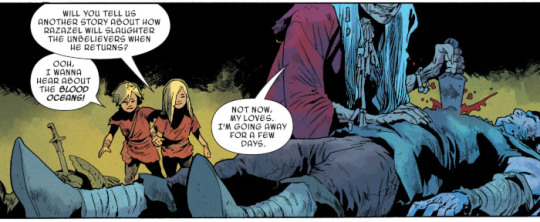
Contagion #5 brings an end to this series from Ed Brisson, Adam Gorham, Veronica Gandini, and Cory Petit. Gorgeous and creepy art here from Gorham and Gandini.
| Published by Marvel
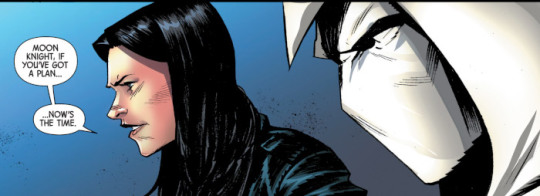
DCeased #6 is surprisingly hopefully, even as everything dies and everybody hurts. It appears to be setting up a sequel, though likely to be incredibly bleak. Tom Taylor, Trevor Hairsine, Neil Edwards, Stefano Gaudiano, Rain Beredo, and Saida Temofonte conclude this series in epic fashion as we say goodbye to Earth.
| Published by DC Comics

Death’s Head #4 is another ending to a series this week, from Tini Howard, Kei Zama, Felipe Sobreiro, and Travis Lanham. Some very nice character work here for Death’s Head and Vee.
| Published by Marvel
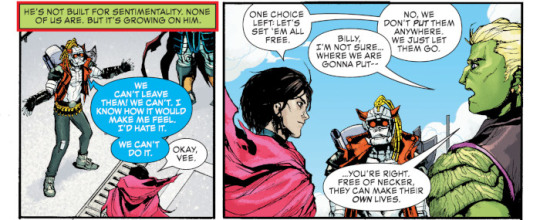
Doctor Strange Annual #1 gives us a pair of tales. The lead from Tini Howard, Andy MacDonald, Tríona Farrell, and Cory Petit is a fun Halloween story dealing with the spirits haunting the Sanctum Sanctorum. Any art from MacDonald is a treat. The back up is a bit more deadly serious with Pornsak Pichetshote, Lalit Kumar Sharma, Sean Parsons, José Villarrubia, and Petit revealing a failsafe should Strange go rogue.
| Published by Marvel
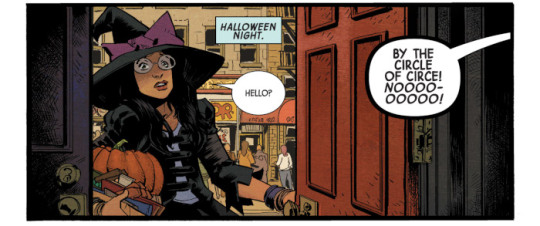
Ether: The Disappearance of Violet Bell #2 continues to be incredibly inventive as Boone tries to track down the assassin. David Rubín’s art is absolutely amazing. And Boone’s continued inability to really think about anyone other than himself is telling.
| Published by Dark Horse

Excalibur #1 is another tick in the win column for “Dawn of X”. The X-Men dabbling in magic isn’t common, but Tini Howard, Marcus To, Erick Arciniega, and Cory Petit do so with amazing flair, fittingly taking us in through Otherworld, Captain Britain, and Betsy Braddock. Apocalypse’s new incarnation as “ •|A| •” and his newfound interest in magic is fascinating.
| Published by Marvel

Five Years #5 spotlights Zoe’s rather elaborate imagination for coming up with ways to murder people. Granted, the Russian agent may well deserve it, but still... Terry Moore continues to deliver some unexpected twists as the end of the world inches closer.
| Published by Abstract Studio

Giant Days: As Time Goes By #1 is a one-shot finale special from John Allison, Max Sarin, Whitney Cogar, and Jim Campbell. It picks up roughly a year from the end of the series, dealing with why Esther has been missing from their reunions. It’s full of all of the humour that we’ve been used to and hammers home the power of friendship. Also, it gets very, very weird.
| Published by Boom Entertainment / BOOM! Box
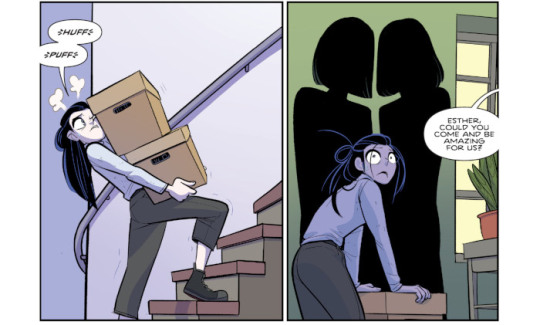
Harleen #2 works hard to portray Harley’s seduction by the Joker. Stjepan Šejić and Gabriela Downie portray it as an insidious, manipulative thing. It might appear romantic on the surface, but there’s definitely a darkness there. There are ideas of bringing back a monster from the edge of insanity, but the story makes you realize that some may well be beyond hope.
| Published by DC Comics - Black Label

Hellboy and the BPRD: Long Night at Goloski Station might well be the best of these new format tales yet, and both of the previous ones were incredibly strong. Here Mike Mignola, Matt Smith, Dave Stewart, and Clem Robins deliver a single issue story building on Hellboy’s confrontation with Baba Yaga, Sir Edward Grey, and demons.
| Published by Dark Horse

Invisible Kingdom #6 begins the second arc, “Edge of Everything”, as the crew first try to find food and fuel and then run afoul of a salvage ship. G. Willow Wilson, Christian Ward, and Sal Cipriano keep things interesting as we start to see the crew’s life after Lux.
| Published by Dark Horse / Berger Books
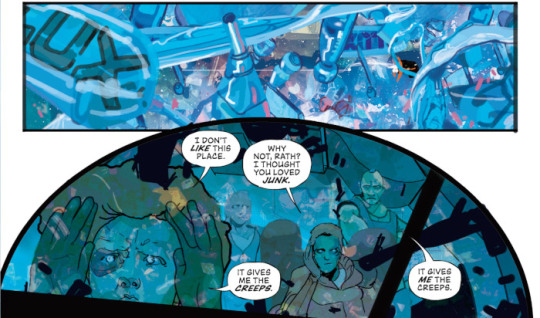
Invisible Woman #4 is disturbing, basically everything goes to hell and everyone that Sue was trusting to see this operation through has let her down. Or worse. Mark Waid, Mattia De Iulis, and Joe Caramagna set up a rather horrifying situation in this penultimate chapter. Again, De Iulis’ artwork is stunning.
| Published by Marvel
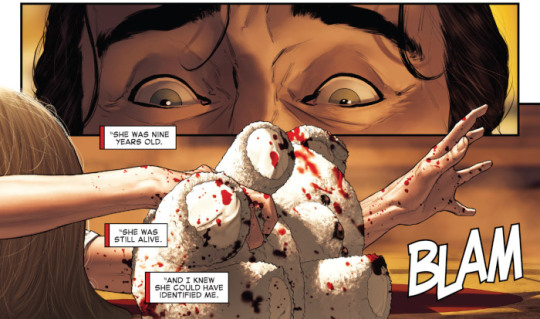
Joker: Killer Smile #1 is essentially a psychological horror from Jeff Lemire, Andrea Sorrentino, Jordie Bellaire, and Steve Wands. It comes from the point of view of a psychiatrist, Dr. Ben Arnell, who is trying to get to the heart of Joker’s mental state. It’s not going so well and it appears like the good doctor is losing time, doing strange things, and possibly worse. Very intriguing beginning to this story.
| Published by DC Comics - Black Label

Knights Temporal #4 has some stunning artwork from Fran Galán, particularly during the gangster sequences where colour comes into play as another important storytelling element. There are some very nice twists this issue, making you wonder about a lot of what we thought we knew.
| Published by AfterShock
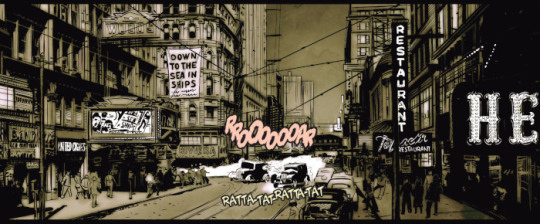
The Last God #1 is dark fantasy done right by Phillip Kennedy Johnson, Riccardo Federici, Sunny Gho, Dean White, Tom Napolitano, Steve Wands, and Jared Blando. It gives us lying kings, heroes who weren’t rightly heroes, and a Lovecraftian terror returned to show the truth. It plays deep on resentment and distrust, and of a complete failure of institutions to uphold a decent society. All with absolutely stunning artwork from Federici, Gho, and White. This is a beautiful, haunting work.
| Published by DC Comics - Black Label

Last Stop on the Red Line #4 is very, very weird. We get a peek behind the masks of the monsters and it’s even stranger. There’s a very interesting mix of symbolism and the supernatural where we’re really not sure where one begins and the other ends. This was a very unique series from Paul Maybury, Sam Lotfi, and Adam Pruett.
| Published by Dark Horse
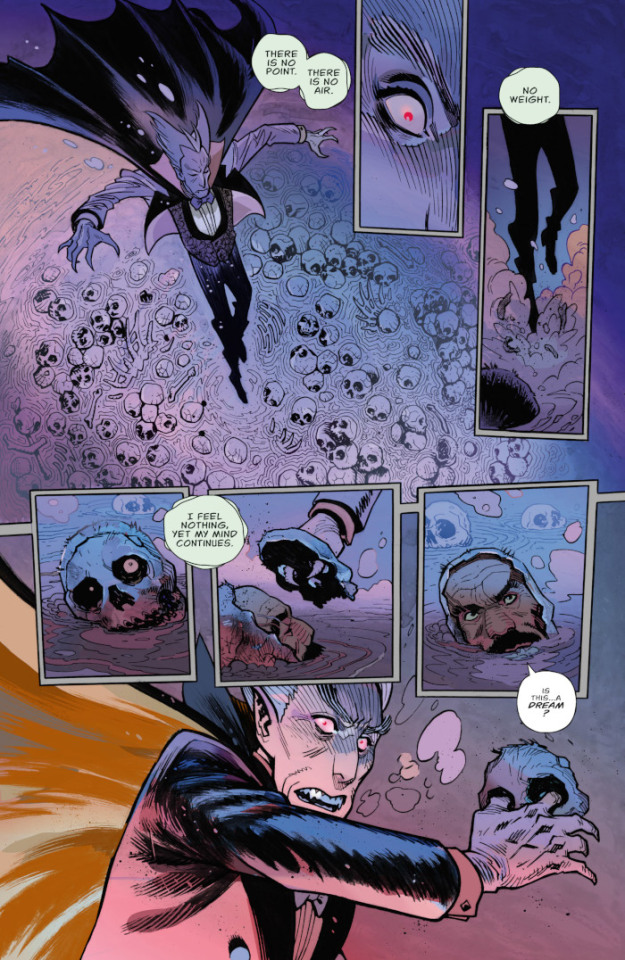
Mall #3 goes even harder into inter-faction warfare as it seems like all of the groups are at one another’s throats. Great world-building here from Michael Moreci, Gary Dauberman, Zak Hartong, Addison Duke, and Jim Campbell, with some interesting plot developments.
| Published by Vault
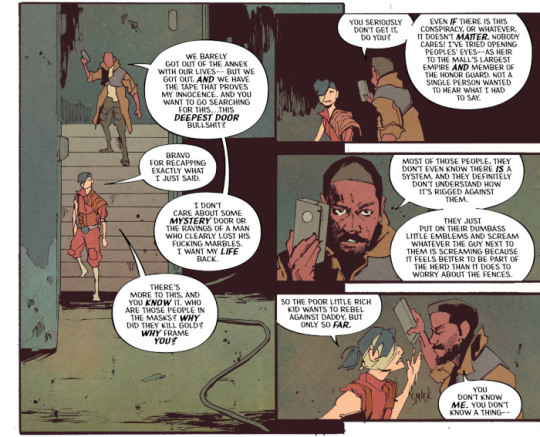
Manor Black #4 concludes the series as we see what essentially amounts to order vs. chaos as the old blood takes on wild magic. This doesn’t feel so much as a conclusion as an end to a chapter of a wider arc, leaving much unresolved. Hopefully we see more. The artwork from Tyler Crook is phenomenal.
| Published by Dark Horse

Marvel Zombies: Resurrection #1 is really damn good. Phillip Kennedy Johnson, Leonard Kirk, Guru-eFX, and Travis Lanham kick off this series with a new angle on the Marvel Zombies, playing up more on the horror angle, with a truly terrifying spread of the disease through a new vector. Gorgeous artwork from Kirk and Guru-eFX.
| Published by Marvel
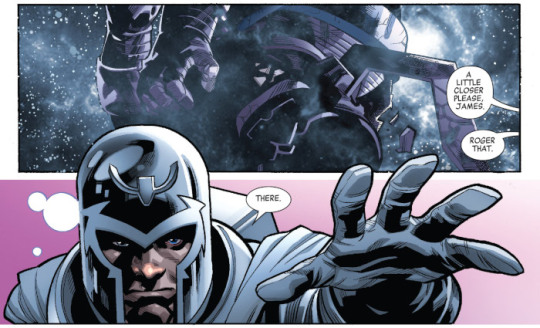
Monster Planet #1 is the kind of thing that you used to see regularly published by Image and Top Cow, the military action comic that throws in horror elements, from Joe Brusha, Marcelo Mueller, Maxflan Araujo, and Taylor Esposito. It’s not bad, setting up a world where humanity has been turned into dinosaur-like beasts and the remnants of society need to turn to classical monsters for help.
| Published by Zenescope
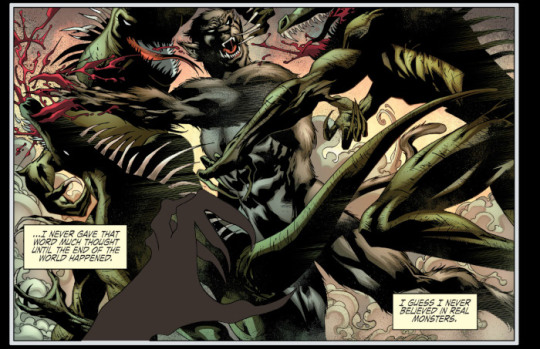
The Necromancer’s Map #3 takes a bit of a different approach, giving us a fair amount of action as Tristan’s Will catch up with Bethany and co. as well as some great character building in between the action. Great stuff from Andrea Fort, Michael Christopher Horn, Sam Beck, Ellie Wright, and AndWorld Design.
| Published by Vault
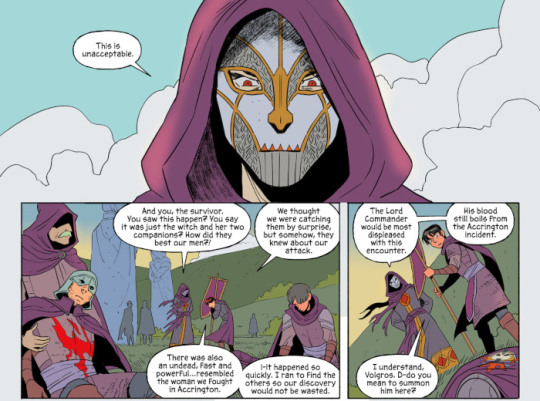
The Plot #2 is wonderful horror storytelling from Tim Daniel, Michael Moreci, Joshua Hixson, Jordan Boyd, and Jim Campbell. Very creepy build of supernatural events once Chase Blaine and his family arrive back at his ancestral home. Hixson and Boyd’s presentation of the black, gooey masses are also disturbing.
| Published by Vault

Queen of Bad Dreams #5 concludes this excellent series from Danny Lore, Jordi Pérez, Dearbhla Kelly, and AndWorld Design. Rather interesting confrontation with and revelations about Eleanor Chase here.
| Published by Vault
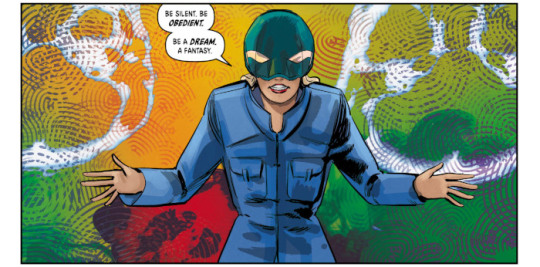
Red Goblin: Red Death #1 is a one-shot featuring three stories set during Norman Osborn’s tenure as the Red Goblin at the end of Dan Slott’s run on Amazing Spider-Man. It’s kind of weird that it doesn’t instead tie-in with current events in Absolute Carnage, but it’s not bad for what it is. The art of the first two stories from Pete Woods is great.
| Published by Marvel

Relics of Youth #2 is even better than the first issue, delving deeper into the mysterious tattoos that the kids have been branded with and their connection to the island that they’ve landed on within the Bermuda Triangle. Matt Nicholas, Chad Rebmann, Skylar Partridge, Vladimir Popov, and AndWorld Design are telling a very compelling adventure here.
| Published by Vault
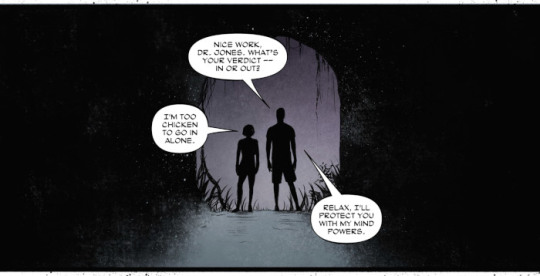
Roku #1 begins another mini-series focusing on one of the luminary villains in the Valiant Universe, this one from Cullen Bunn, Ramón F. Bachs, Stéphane Paitreau, and Dave Sharpe. It’s full of action and intrigue as Roku is hired by an unknown client to retrieve...someone. Things get more interesting as a new face stands in her way and we find out the unusual nature of the target.
| Published by Valiant

The Sandman Universe Presents: Hellblazer #1 is a homecoming of sorts for John Constantine, back to his old haunts alongside some of the other Vertigo corner of the DC Universe. Si Spurrier, Marcio Takara, Cris Peter, and Aditya Bidikar spin a yarn that reconstitutes John after a massive magic war led by an evil Tim Hunter. How exactly the pieces fit are anyone’s guess, but it’s a brilliant darker take resetting him here.
| Published by DC Comics - Black Label / The Sandman Universe

Savage Avengers Annual #1, though largely a self-contained story, is still integral to Conan’s adventure through the Marvel universe and the overall narrative as he, Hellstorm, and Black Widow stumble across a human trafficking ring that bears the marks of Kulan Gath. Gerry Duggan, Ron Garney, Matt Milla, and Travis Lanham deliver a compelling story.
| Published by Marvel

SFSX #2 does further world and character building, showing us just how much has changed since the Party took over, and how utterly betrayed many of the people from the Dirty Mind felt of Avory abandoning them. Very interesting stuff from Tina Horn, Michael Dowling, Chris O’Halloran, and Steve Wands.
| Published by Image

Silver Surfer: Black #5 concludes what has been a very trippy series from Donny Cates, Tradd Moore, Dave Stewart, and Clayton Cowles. There are some very interesting revelations of the past here, and it really makes you wonder about the Surfer’s new incarnation.
| Published by Marvel
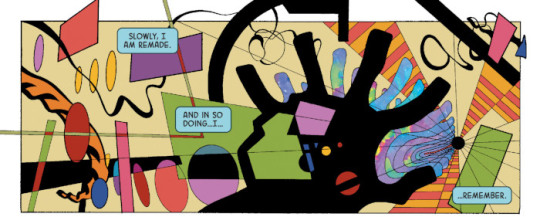
Star Pig #4 concludes the series, kind of, from Delilah S. Dawson, Francesco Gaston, Sebastian Cheng, and Shawn Lee. There’s some rather disturbing tentacles in this one.
| Published by IDW
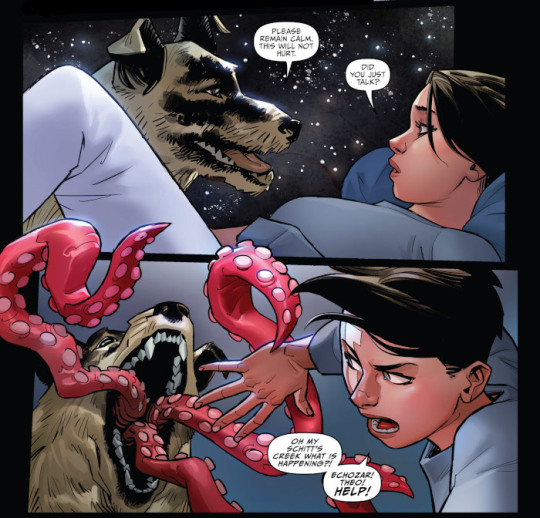
Star Wars Adventures: Return to Vader’s Castle #5 brings an end to this round of the series. I think it’s a perfect approach for some all ages “ghost stories” within the Star Wars universe. Wonderful resolution for the framing story from Cavan Scott, Francesco Francavilla, and AndWorld Design.
| Published by IDW
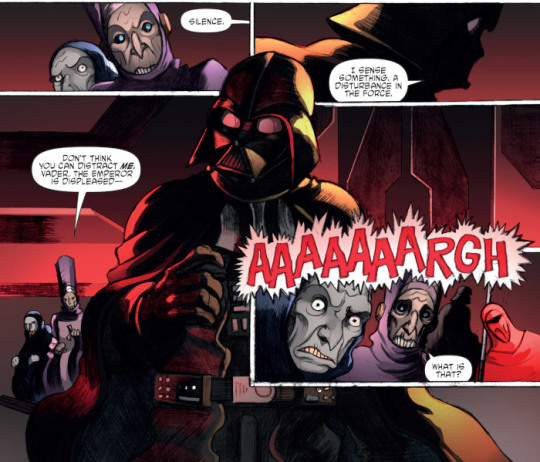
Tales from the Dark Multiverse: The Death of Superman #1 is the second of these one-shots spotlighting DC events gone horribly wrong, this time giving us a much angrier Lois Lane’s grief at the loss of Superman to Doomsday. Jeff Loveness, Brad Walker, Drew Hennessy, Norm Rapmund, John Kalisz, and Clayton Cowles present her as vengeance against a world that didn’t deserve Superman’s grace, raising some of the questions that you’d often see in The Authority. Only, you know, kind of evil. It’s not bad, but definitely dark.
| Published by DC Comics
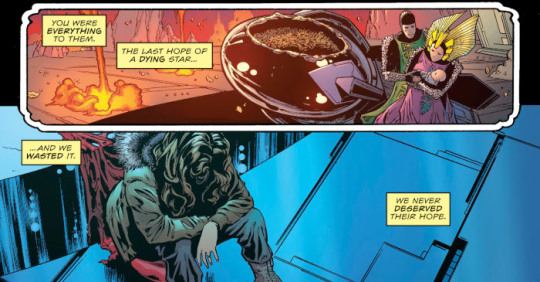
Teenage Mutant Ninja Turtles #99 is the extra-sized penultimate chapter of “City at War” as all of the pieces begin falling into place for the grand finale. The story here from Kevin Eastman, Bobby Curnow, Tom Waltz, Dave Wachter, Ronda Pattison, and Shawn Lee feels truly epic and that something huge may just happen next issue. As it is, there’s still a ton of action here, some interesting developments with the Rat King, more disappointment when it comes to Raph, and something new with the mutagenic bomb.
| Published by IDW
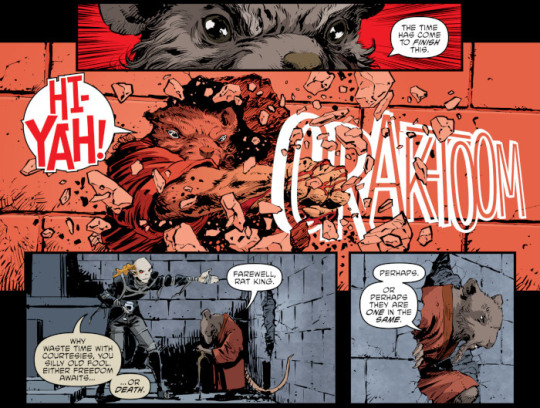
Test #5 is very strange. Christopher Sebela, Jen Hickman, Harry Saxon, and Hassan Otsmane-Elhaou end this story as Aleph and Laurel find one another and a new way is planted, but there’s still seeds of something going awry.
| Published by Vault
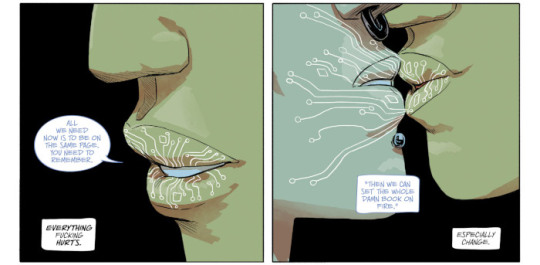
Venom #19 largely plays out the end bits for the Maker and Dylan’s portions of Absolute Carnage, with some very interesting revelations. It seems like even bigger seeds are being lain for future stories here. Great art from Iban Coello and Rain Beredo.
| Published by Marvel

Witchblade #16 gives us the fight between Alex and Haley, after a few distractions and discursions. The stakes are pretty high here and there are a few rather tense moments as it plays out. Beautiful art from Roberta Ingranata and Bryan Valenza.
| Published by Image / Top Cow

Wonder Woman Annual #3 is largely a flashback tale, set five years ago as Wonder Woman and ARGUS attempt to extract an agent sent to infiltrate Gorilla City to see the legitimacy of Grodd’s rule. What Steve Orlando, V. Ken Marion, Sandu Florea, Hi-Fi, and Pat Brosseau do with is establish a new backstory and interpretation for a very old Wonder Woman foe in a fairly interesting way that even ties in to Event Leviathan. It may strain a bit of credibility for the villainous turn, but that will largely depend on the follow-up.
| Published by DC Comics

Other Highlights: Archie 1955 #2, A Basketful of Heads #1, Batman and the Outsiders Annual #1, Chrononauts: Futureshock #1-4, Dead Man Logan #12, Fantastic Four: Grand Design #1, Fight Club 3 #10, Friendly Neighborhood Spider-Man #13, Ironheart #11, James Bond 007 #12, Jim Henson’s The Dark Crystal: Age of Resistance #2, Journey to Star Wars: The Rise of Skywalker - Alliance #4, Jughead’s Time Police #5, Kick-Ass #18, Mighty Morphin Power Rangers #44, Rick & Morty #55, The Ride: Burning Desire #5, Runaways #26, Star Trek: Year Five #7, Star Wars: Doctor Aphra Annual #3, Star Wars Adventures #27, Superior Spider-Man #2, Tremor Dose, Warlord of Mars Attacks #5
Recommended Collections: Amazing Spider-Man: Red Goblin, Amber Blake - Volume 1, Black Science - Volume 9: No Authority But Yourself, Deadpool - Volume 3: Weasel Goes to Hell, Dept H. Omnibus - Volume 3: Decompressed & Lifeboat, Dick Tracy Forever, Hit-Girl - Volume 5, Jimmy’s Bastards - Volume 1: Year One, Lucifer Omnibus - Volume 1, Marvel Action: Spider-Man - Book 2: Spider-Chase, Punk Mambo, Spider-Gwen: Gwen Stacy, Star Trek: The Q Conflict, Symbiote Spider-Man, Thor - Volume 3: Wars End, Tony Stark: Iron Man - Volume 3: War of the Realms, Vamps: The Complete Collection, War of the Realms: Uncanny X-Men, The Wild Storm - Volume 4

d. emerson eddy feels like stale, day old pepperoni pizza.
5 notes
·
View notes
Text
Opening Bell: July 5, 2019

In June 1969, El Salvador and Honduras met in a world cup qualifying match at Estadio Azteca in Mexico City. The winner of this match—the third and deciding match of the qualifying series—would become the first Central American country to play in the World Cup, set to take place the following year in Mexico. The match was back and forth, but El Salvador prevailed with a goal in overtime. Two weeks later, the Honduran and Salvadorean armies began openly skirmishing on the border, Salvadorean airplanes bombed targets inside of Honduras, and the army invaded and occupied a strip of Honduran territory. Coming so soon on the heels of the match in Mexico City, western press connected the result of the match to the seething tensions between the two countries and ever since, the conflict has been called The Football War. The matchup between the two national teams actually had little to do with the war or the tensions which precluded it. Instead, it was economic stagnation in El Salvador and harsh immigration policies in Honduras, which lead to the forced deportation of thousands of poor Salvadorean farmers back to El Salvador. The two nations were also headed by strongmen who had gained power through military coups and they were eager to stoke nationalist instincts in order to reinforce their own regimes. On the fiftieth anniversary of the Football War, Sports Illustrated looks at the war and the match which happened to occur in parallel to the conflict between the two nations.
Israel has, virtually since its founding in 1948, featured a strong military and a robust intelligence service. Much like the U.S. has the FBI for domestic security and law enforcement and the CIA for foreign intelligence gathering and operations, Israel has Shin Bet for internal security and Mossad for foreign intelligence. Mossad has engaged in several high-profile operations over the decades, and participated in many more which remain hidden from the public. Mossad’s exploits and failures are exotic and often seem like something out of a fictional spy novel. In this piece for Tablet magazine, one former Mossad spy named Yossi, talked about his recruitment to Mossad and some of the jobs he did as an agent in the 1960s and 70s and later as an associate (associates are former active spies who retain a connection to Mossad and are occasionally called back to active work for the agency. Not all of Yossi’s exploits are successful and he is occasionally arrested by authorities in the country where the operation occurred, but those projects he was involved in that were successful, had outsized influence on Israeli interests. This is a really interesting read.
In 2005, the United States was at its lowest levels of domestic oil and gas production in decades. Everyday, millions of barrels of oil was imported from Saudi Arabia, Venezuela, and other oil-rich nations. This is not to say that the U.S. had exhausted its oil reserves or that no untapped oil fields, quite the opposite. The issue was that those reserves which remain in the ground is how to extract them; oil fields found under rock formations called shale, were particularly thought impossible to recover. In the 1990s and early 2000s, though, a new method called fracking, or hydraulic fracturing, was developed. Fracking allowed shale formations to be cracked, hydrocarbons to be flushed out, and brought to the surface. The widespread adoption of fracking techniques—particularly at large shale formations in South Dakota, Pennsylvania, and Texas—opened up new oil fields for exploration and exploitation. Within a few years, the United States was among the world’s biggest oil and gas producers again, completely altering the discussion of U.S. energy policy from “energy independence” to using oil as a means to influence American interests around the globe. At the center of this oil production revolution was a number of companies, including Oklahoma-based Chesapeake Energy and its founder and CEO, Aubrey McLendon. McLendon though, as this piece by The Guardian makes clear, symbolizes the inherent problems of fracking: it’s expensive and difficult to turn a profit while doing it, and companies like Chesapeake often survive by simply borrowing more money. But the downturn in the oil price, caused by the fracking-inspired increase in oil production, is the industry’s own undoing.
In 2017 and 2018, a series of seemingly random shootings occurred in the Malibu Creek State Park. One victim was Tristan Beaudette, who was shot and killed while sleeping in a tent with his two daughters, who were unharmed. At first, Beaudette’s death was looked at in isolation, but a broader pattern of shootings taking place before and after Beaudette’s death. Eventually, a suspect was arrested and charged with all 10 shootings that had occurred up to that point. But area residents continued to report shots fired throughout the valley during the nights after a suspect was arrested. And some residents and journalists have noted that some victims were shot with a rifle round, others incidents involved buckshot, while the L.A. County Sheriff’s Department’s primary suspect was arrested only with a rifle. This piece from GQ is about the mysterious shootings, the apparent disinclination of authorities to dig any deeper than their initial suspect, and the apparent utter randomness of the entire situation.
The Rockefellers are one of the most well-known, powerful families in American history. Even today, the Rockefellers maintain the vast wealth and fortune accumulated by their patriarch ancestor, John D. Rockefeller, in the late 19th century, and protected by putting it all into a series of trusts in the 1930s by John D. Rockefeller Jr. While the grandchildren of John D. Rockefeller went on to public service as governors of New York and Arkansas, as a senator in West Virginia, and eventually as Vice President of the United States, his great-grandchildren have become involved in other pursuits both within the family businesses and outside of them. One of them, George O’Neill, married the daughter of Ronald Reagan’s ambassador to Switzerland, in what seemed like a storybook relationship. 10 years and five children later, Amy O’Neill sought to divorce her husband George and in the process revealed a series of salacious affairs, putting George and the entire Rockefeller family in a negative light. This story from 2001, shows that even prominent families have skeletons in the closet, but also demonstrate that money and power can allow a great deal protection from consequences.
The Parvati River Valley crosses through the northern Indian state of Himchal Pradesh, leading to the foothills of the Himalayas. It is a part of India which is filled with religious sites, spiritualists, ascetics, and attracts thousands of westerners seeking internal cleansing. It also attracts outdoorsmen and adventure-seekers. Justin Alexander, a 35 year old American who had quit his banking job three years earlier in order to travel the world, was a bit of both. Alexander had extensive experience as a survivalist and was highly self-reliant out in the wild. One day, after living in a cave in northern India for three months, Alexander decided to join a local holy man and enter the Parvati Valley in order to reach a lake of spiritual importance. He never returned, but the yogi and a local man hired as a courier, returned from the Valley, unable to provide a cognizable answer as to what happened to their American colleague. This is a story about getting lost in the world as a way to find inner truth, but potentially succumbing to the fevered mania which India can create in a person.
Fan Bingbing is one of the biggest movie stars in China. In a nation where the film industry has grown exponentially over the last decade, and a new wide release may appear on 20,000 screens in a single weekend—compared to 2,000-3,000 screens here in the U.S.—this is not insignificant. Fan not only acts, but owns a production company, a string of acting schools, and endorses dozens of products in China and Europe; she had recently begun pushing into the U.S. movie market by co-starring in big budget American action films, notably an installment in the X-Men series. Then, suddenly, in late May 2018, Fan disappeared from public view. She made no appearances, did not use any of her social media accounts—at least one of which has as many followers as the official accounts of the Chinese Communist Party—and no announcements about her whereabouts were made. In October 2018, Fan just as abruptly reappeared and instead of offering an explanation behind her disappearance, made a lengthy statement apologizing for unstated offenses and praising the Communist Party and the government of President Xi Jinping. In the interim, a wave of panic washed over Chinese elites, including and especially actors and producers in China’s burgeoning film industry. While no official explanation has ever been issued by Beijing or by Fan, it is generally thought that Fan had underreported her income for tax purposes across a number of film projects, apparently a common practice in the industry. Ever since Deng Xiaopeng declared in the 1980s that some accumulation of wealth is okay under China’s form of Communism, the nation has seen some of the most significant economic growth in modern world history. Now China under Xi seems like it wants to add context to Deng’s economic proclamations: accumulation of wealth is good, but the state must get its due or there will be consequences.
Welcome to the weekend.
#Opening Bell#soccer#football#World Cup#El Salvador#Honduras#Mexico#Football War#war#economics#immigration#conflict#CIA#FBI#Israel#Shin Bet#Mossad#intelligence#counterintelligence#spies#spying#oil#gas#fracking#United States#Aubrey McLendon#Chesapeake energy#geology#shale#Malibu Creek State Park
0 notes
Photo

Michael Tristan. Associate Training Manager - Regulatory Operations.
I'm first generation in the US, with both parents from Mexico. Identifying as Latinx has played a pivotal role in shaping who I am today. For me, a major part of this identity is learning from the experience of my parents. Despite facing the same challenges faced by many other immigrants (language barriers, discrimination, culture shock, etc.), I saw first hand how strong work ethic, discipline and perseverance empowered them to create success for themselves and our family. This identity has meant so much outside of work as well. I have distinct and vibrant memories centered around treating others like family, even if we weren't related. I also remember overhearing parents, relatives and invited guests have conversations that started at the dinner table and turned into conversations that lasted all night, with seemingly endless bouts of laughter and deep connections being formed anywhere in between. This became my normal, and, even now, I find myself having deeper conversations than my peers, and making very meaningful connections. I attribute all of it to this identity, and I wouldn't change a thing. It's the reason I continue to strive to better myself, whether that is in the work I do, or simply in terms of the person I can be to help those around me. It's also a big part of the reason I love connecting with and developing other people, and why superficial connections never seem to be enough for me. I'm most proud to come from a group of people that values taking care of others so highly. From something simple like hosting a party and ensuring everyone's having fun, to something more complex like helping others through their problems—I'm proud that I love to take care of others, and I attribute this to my identity. When I was younger and still living at home, I distinctly remember coming home one Saturday night after my shift at work (11PM), and as I approached the door, seeing the windows that surrounded our front door fogged up. Instinctively, I knew this meant that my mom was simmering Menudo overnight, so it would be ready for for Sunday Morning, and I became so excited. This latin dish is a personal favorite, but as I recall this particular experience, it’s more than the aroma and food that stands out. It may sound silly, but for me this memory has become symbolic of many things. In particular, the warmth and care my mom put into the things she did (she’s since passed on), and the discipline she had for making sure things were perfect, no matter how long it took. I'm so grateful for this memory, and happy to say my mom’s legacy lives on when I remember that night (and anytime I have Menudo on a Sunday).
0 notes